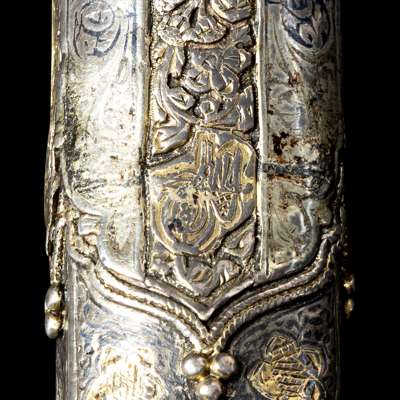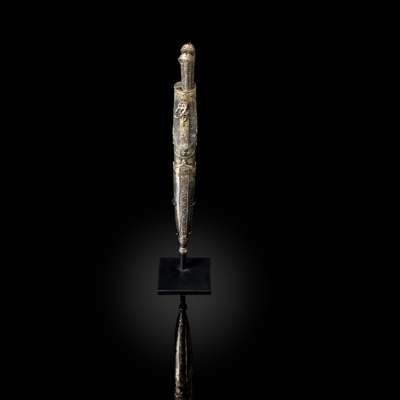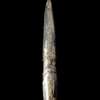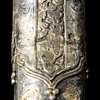
Lot 48

A RARE AND EARLY OTTOMAN SILVER-GILT AND NIELLOED KNIFE SET WITH TUGHRA OF SULTAN AHMED III (R. 1703-1730)
TURKEY, EARLY 18TH CENTURY












Auction: 11 June 2025 from 10:00 BST
Description
formed of a pair of small knives with tapering blades set within one scabbard, the tops of the hilts set with garnets, the surface of the scabbard with silver-gilt panels engraved and decorated wit floral designs, the interstices decorated in silver niello with intertwined scrolls and stylised carnations, stamped with a tughra, on stand
Dimensions
21.2cm long
Footnote
This knife set (trousse) is exceptional. Not only is it a masterpiece in terms of the fineness of its execution, but it is also one of the oldest known examples of an Ottoman silver trousse. The surface is richly covered with engraved and incised designs against a background of niello, and stamped with the tughra (personal seal) of the reformist Ottoman sultan Ahmed III (r. 1703-1730). In terms of its technique, it is similar to a somewhat earlier silver dagger from the reign of Sultan Mehmed IV (r. 1648-1687), which is also silver-gilt and nielloed (see G. Kürkman, Ottoman Silver Marks, Mathusalem Publications: 1996, p.145). A suite of body armour, made for the Janissary Mustafa Ağa and dated 1093 AH/ 1682 AD, displays the same quality of niello-work as the present knife-set (op. cit., p.146). This similarity in both decoration and technique shows that the aesthetic of silver and niello developed under Mehmed IV from the mid-17th century continued to be prized during the reign of his son and heir Ahmed III.
Of particular note is the pattern of repeating stylised carnations which covers the scabbard. These flowers were highly regarded in Ottoman culture, appearing across a wide variety of media including metalwork, as seen here, but also ceramics, textiles, and manuscript illumination. Portraits of Ottoman Sultans and high functionaries often depict them holding a carnation, and these blooms were also used as metaphors for the beloved in Ottoman poetry.











